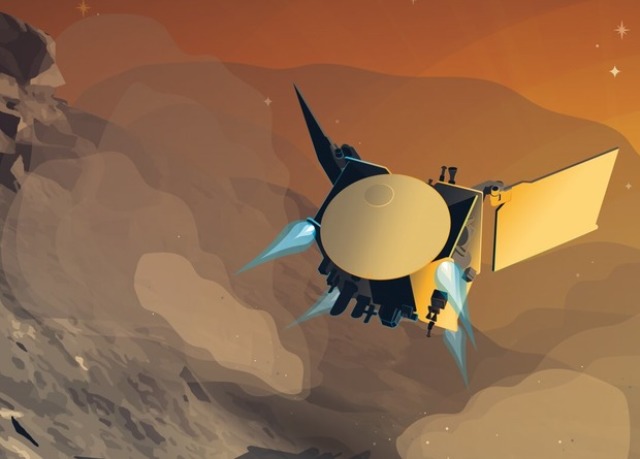The team of the OSIRIS-REx interplanetary station has chosen a new target for research. This is the famous asteroid Apophis, which was previously considered the most dangerous body for the Earth. The station, which is now flying to Earth with the soil of the asteroid Bennu, will go to Apophis in 2023 and will explore it from orbit, it is reported on the University of Arizona website.
The OSIRIS-REx station (Origins Spectral Interpretation Resource Identification Security Regolith Explorer) was launched into space in 2016 and became the third device designed to deliver samples of asteroid matter to Earth. It is expected that a comprehensive study of the soil in laboratory conditions and a comparison of the results with the data collected by the spacecraft during the study of an asteroid from a low orbit will make it possible to understand the conditions prevailing in the early Solar System, as well as to determine the contribution of small bodies to the delivery of water and organic compounds to the young Earth.
The main target of OSIRIS-REx was the near-Earth asteroid 101955 (Bennu), to which the station arrived at the end of 2018. In October 2020, the device took a soil sample, the total mass of the collected substance of the asteroid was about 400 grams. In May 2021, OSIRIS-REx went to Earth, the returned capsule with soil should land at a landfill in Utah on September 24, 2023.
On April 26, 2022, NASA announced the extension of the OSIRIS-REx scientific program for 9 years. The total cost of the mission increases by $200 million. The device will receive the designation OSIRIS-APEX (APophis EXplorer), and its new target is the asteroid (99942) Apophis, which until March last year was considered the most dangerous for the Earth and received four points for The Turin scale . It belongs to the S-type, has a diameter of 350 meters and can be a "pile of rubble" . It is expected that on April 13, 2029, the asteroid will fly about 30 thousand kilometers from Earth.
It is expected that OSIRIS-APEX will make the first maneuver on the way to Apophis 30 days after the capsule is dropped, and after reaching the asteroid, it will explore it for 18 months from orbit, examining the composition and morphology of the surface. The exact date of arrival of the device to Apophis is not yet called. In addition, the spacecraft will descend over the surface of the asteroid and turn on the engines to expose the near-surface layers of Apophis for research. Scientists note that the extended program is characterized by significant technical risks and before starting work, it is necessary to make sure that the station is able to operate at maximum proximity to the Sun up to 0.5 astronomical units.
Some of the discoveries made by OSIRIS-REx can be read in the material [...] "Diamond-shaped Celestial Body" .
Alexander Voityuk

